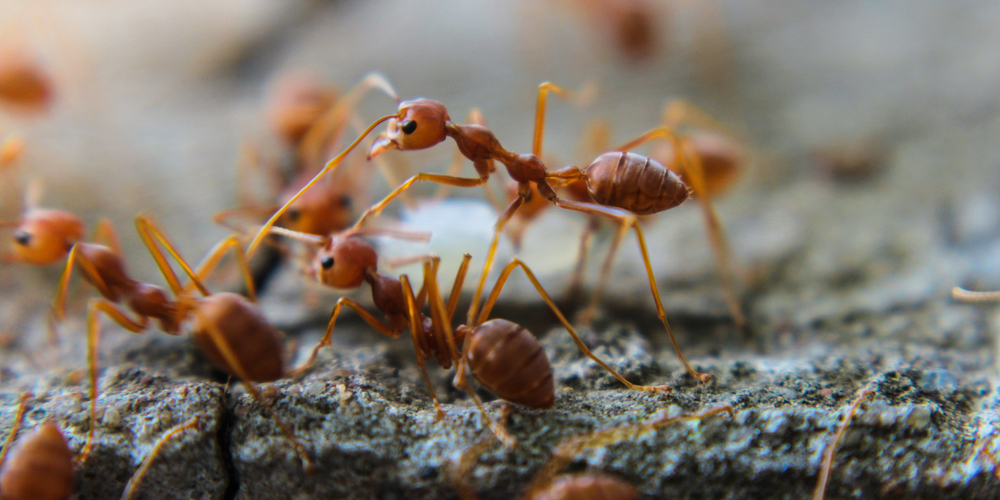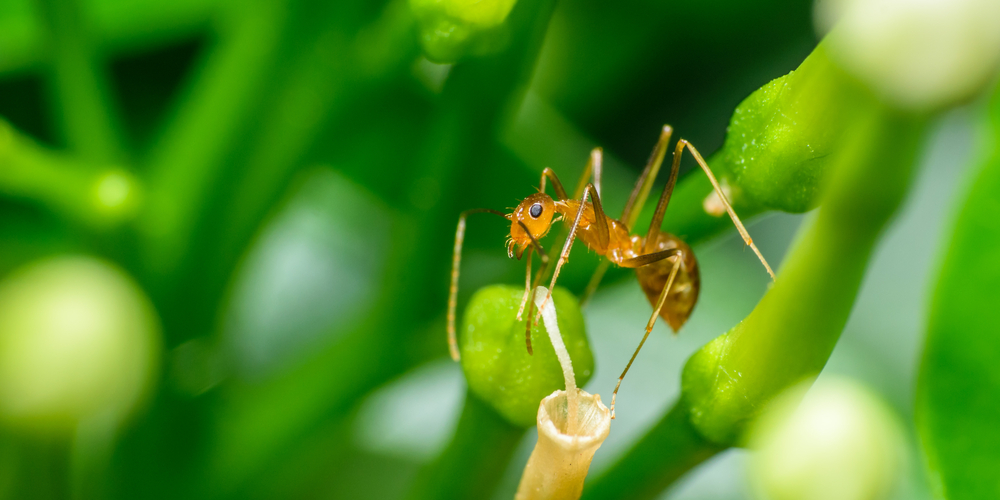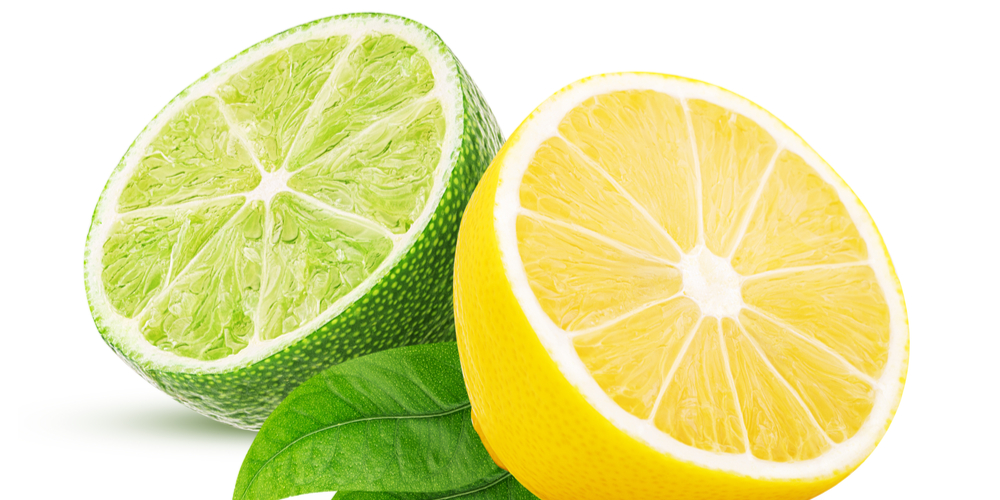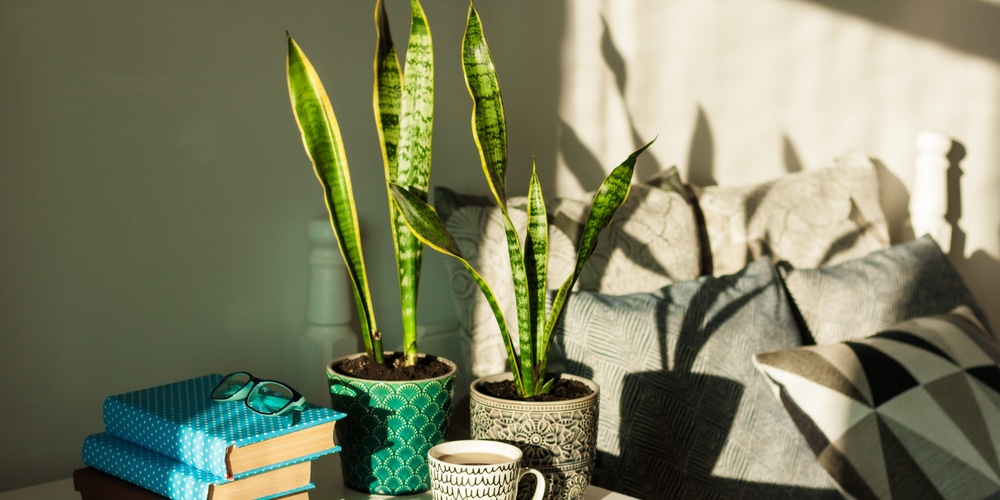One of the most frustrating things about growing houseplants is dealing with pests. And while there are a variety of pests that can plague your plants, one of the most common is ants. Dealing with ants in house plants is a common issue, but it’s one that can be dealt with relatively easily.
This guide will show you how to get rid of ants in houseplants and provide some tips on preventing them from coming back.
Why Are There Ants in Your House Plants?

First of all, it’s important to note that ants don’t necessarily pose any significant threats to plants. Their presence is often beneficial because they help aerate the soil, which allows for better drainage. Ants can also play a role in helping spread nutrients around the root system.
In fact, in most instances, they’re not probably after the plant itself. Rather, they’re after the sweet honeydew that aphids and similar insects secrete.
Aphids are small, soft-bodied insects, and their diet consists of plant sap. They pierce the plant’s surface and suck out the sap. As they feed, aphids secrete a sugary substance called honeydew. Ants are attracted to this honeydew and will often protect aphids from predators in exchange for it.
With that being said, the presence of ants in your potted plants may be indicative of a bigger problem: an infestation of aphids or other pests. These insects can quickly decimate a plant, so taking action as soon as possible is important.
How to Get Rid of Ants in House Plants
Having to deal with ants in houseplants is definitely a nuisance. But thankfully, you can do a few things to get rid of them. Before we try to get rid of the plants, it’s important to identify and treat the underlying issue: an infestation of aphids or other pests. Once that’s taken care of, getting rid of ants in houseplants is a relatively easy process.
There are a few different methods you can try, and each method may work better for certain types of plants. Experiment to see what works best for you. Additionally, some of these methods may boil down to personal preference.
Physically Remove the Ants
Don’t panic – it’s not as hard as it sounds. One of the simplest ways to get rid of ants in houseplants is to physically remove them. This can be done by gently brushing them off with a soft brush or by spraying them with water.
A damp cloth can also be used to wipe them away. However, this only works if there are only a few ants. If you have a large infestation, you may want to try some other methods on our list.
Change the Plant’s Environment
Sometimes, the best way to get rid of ants in houseplants is to change the environment. If the pot is infested, try repotting the plant in fresh soil. This will get rid of any aphids or other pests that may be hiding in the pot.
You can also try moving the plant to a different location. This is especially effective if the plant is near a door or window, as ants are often attracted to light.
Use Ant Baits or Traps
Ant baits are considered to be one of the simplest and most effective ways to get rid of ants in houseplants. The bait is designed to attract and kill the ants, and it can be found at most hardware or home improvement stores.
Take note, however, that the results are not instant. The ants need to take the bait back to their nest. Once the consumed bait kills the queen, the colony will eventually die off.
Use Natural Predators
If you don’t like the idea of using pesticides, you can try using natural predators. Ladybugs are a great example – they love to eat aphids. You can find them at most garden stores. When aphids are gone, ants are more likely to leave as well.
Use Citrus
One thing that ants hate is citrus. You can use this to your advantage by creating a citrus spray. Simply mix the juice of one lemon with water and spray it on the affected areas.
You can also try using essential oils like lemon or orange oil. These work in a similar way and can be just as effective.
Create a Soap Solution
Dish soap can be used to repel ants. Mix about a teaspoon of dish soap with a cup of water and spray it on the ants. This will kill them on contact. Soap acts as a surfactant, which means it will disrupt the ants’ ability to breathe. Once it gets in contact with the ant’s exoskeleton, it can dehydrate and kill them.
As a bonus, this solution can also be used to get rid of aphids and other pests.
Use Cinnamon
Aside from being a great spice, cinnamon can also be used to get rid of ants in houseplants. Simply sprinkle some cinnamon on the affected areas, and the ants will stay away.
Cinnamon works by masking the scent trails that ants use to find food. Without these trails, they’ll have a hard time finding your plants. They act as an excellent repellant, and you probably have this in your kitchen.
Use Insecticides
Although not everyone likes the idea of using chemical sprays, this option provides instant results.
Preventative Measures
- Once you’ve gotten rid of the ants, it’s important to take some preventative measures. Here are a few things you can do:
- Keep your plants healthy. Aphids and other pests are attracted to weak or sickly plants. Make sure to keep your plants well-watered and fertilized.
- Regularly check your plants for pests. Inspect them weekly, if possible. This way, you can catch problems early on and nip them in the bud.
- Be careful with what you bring into your home. If you buy a new plant, make sure to inspect it for pests before bringing it inside.
- Prevent food spills. Any time there is food around, make sure to clean it up right away. Ants are attracted to sweets and will come looking for more if they find some. Once ants find their way inside your home, there’s a higher chance they’ll find their way to your plants.
Ants in House Plants: Final Thoughts
It may seem like a lot of work, but taking the time to get rid of ants in house plants is worth it. If you’re dealing with an infestation, try some of the methods above.
With a little patience, you should be able to get rid of them for good. And, once they’re gone, take some preventative measures to make sure they don’t come back.


